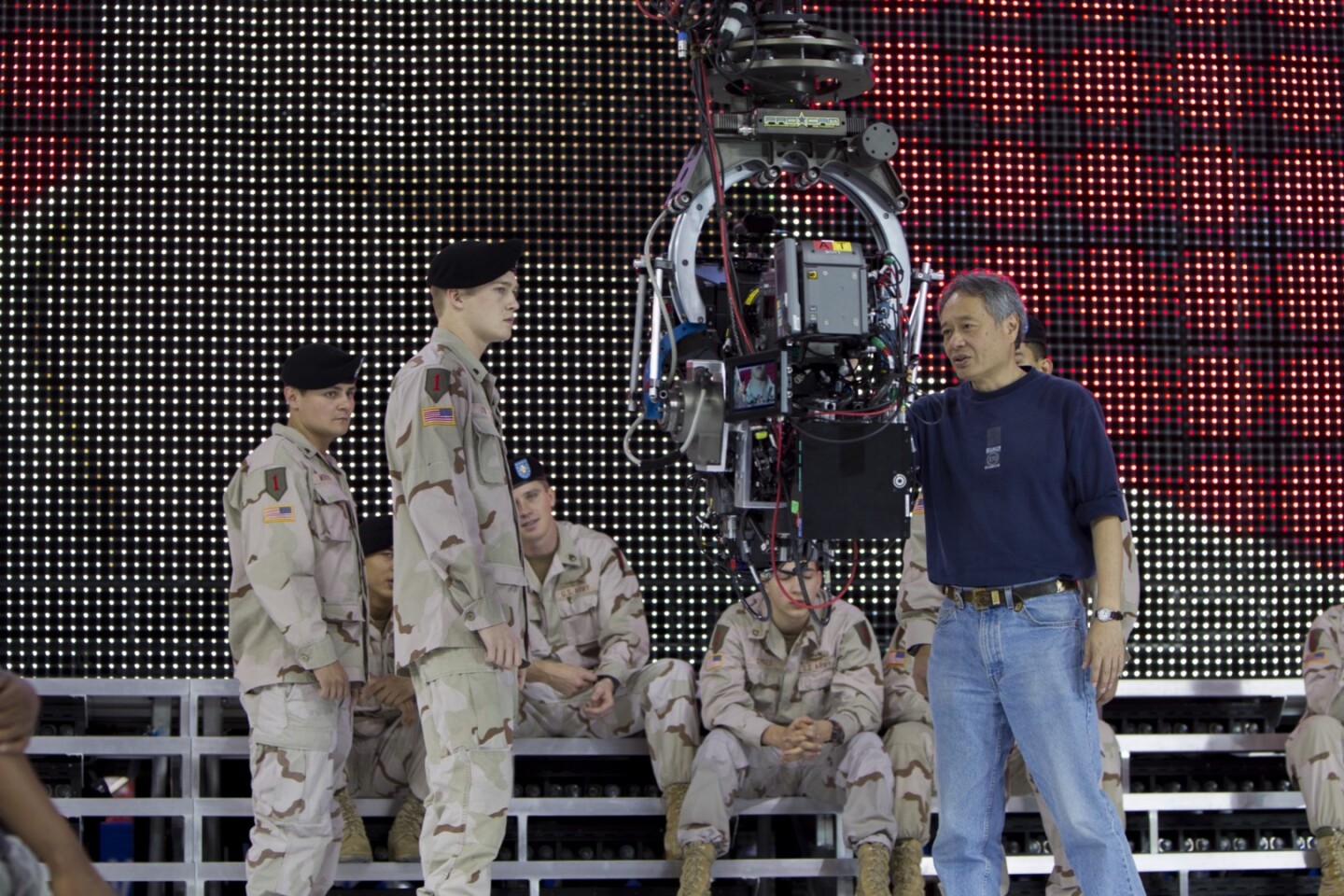Two-time Oscar winning director Ang Lee recently premiered his latest film Billy Lynn's Long Halftime Walk to New York audiences, giving the general public their first glimpse of the possible future of cinema exhibition. Shot and exhibited in a state-of-the-art 3D, 4K, 120 frames-per-second format, the screening seemingly left audiences unsure as to whether this degree of heightened resolution helps or hinders the cinematic experience.
Surpassing the traditional 24 frames-per-second (fps) projection rate, this faster system is designed to not only load more visual information into a single second of screen time but also eliminate some of the long-running stuttering issues with modern 3D digital projection. In the instance of Ang Lee's latest expensive experiment early reports indicate this dramatic rise in frame rate may make the experience so realistic that it becomes difficult to connect with the material.
Rodrigo Perez at The Playlist argues that "the cutting-edge technology diminishes the picture emotionally, its ungainly look trivializes the drama and indulges it with an undesirable air of superficiality."
Over at The Wrap, Dan Callahan interestingly points out how the new frame rate technology makes traditional cinematic focal points inherently dysfunctional. "In most of the scenes in Billy Lynn's Long Halftime Walk, a figure will stand in the foreground of the frame and the background will be out of focus, and the foregrounded figure is so super-clear that they look like a cut-out with scissors from a glossy magazine," he writes.

For several years now many pundits in the film industry have been pushing for higher frame rates and increased digital resolutions. Back in 2011, blockbuster power-player James Cameron presented a tech-demo showing a 3D reel shot at 60 fps. At the time he was moving into an extensive pre-production phase on his upcoming Avatar sequels and loudly proclaimed high frame rates as the way of the future for 3D cinematic experiences.
The following year gave the general public their first chance to experience a high frame rate film with Peter Jackson's The Hobbit screening internationally in 48 fps 3D. The general sentiment following early screenings was controversial to say the least, with audiences claiming the film looked like a "tv production" and the extra detail simply revealed the artifice of the set constructions and the unreality of the make-up.
The Hobbit experience raised some interesting and fundamental questions about how Hollywood productions could move forward with this new technology. The higher frame rate undoubtedly had many significant positive returns, particularly in reducing a frustrating motion blur always present in current 24 fps 3D projection, but the enhanced visual detail also made intimate scenes feel like they were costumed film sets (no more painted styrofoam caves).
Over the next two Hobbit releases the post-production team worked tirelessly to improve and learn from this initial feedback. But audiences had made up their mind and by the time the third and final film hit our screens in 2014 there was barely any talk of a 48 fps release, even though from all reports the technology had been greatly improved. In 2014 James Cameron also backtracked from his earlier statements and decided to shoot his Avatar sequels in 48 fps.
The question that was constantly hovering over all this high frame rate discussion was: "Is there a point when something becomes 'too real' and begins to negatively affect the cinematic experience?"
With all this talk about 48 fps and 60 fps, Ang Lee was doing something crazy. He was taking a relatively small and intimate novel about a soldier returning home from Iraq and shooting it in the most technologically advanced way possible. Making a film in 4K 3D at 120 fps revealed a whole host of unforeseen problems that were only discovered while in production.
It was quickly learned that actors could not wear any make-up as it was painfully visible when viewed through the hi-res cameras. Sets and lighting had to be re-conceived to suit the technology. Even the actors themselves had to change the way they traditionally performed as the technology revealed many general mannerisms came across as false and hammy in this new format.
From recent reports it seems Lee didn't overcome all of these issues as, Brett Lang in Variety elucidates, "... there are other moments where the format exposes the artifice of the acting. When Billy's fellow soldiers slap each other on the back, laugh at one another's jokes or reach for that bottle of Jack, their movements feel overly choreographed. Their schtick is more schtick-y. It's like watching a high school play."
All of these questions may be ultimately moot for general audiences, given there are currently only two cinemas in the US that are technologically equipped to play Lee's latest film in its ultimate 4K 3D 120 fps format. For most cinemas the current maximum they can reach is 2K 60 fps and the film is still going to be rolled out in a more traditional 24 fps format as well.
Is this just a case of the shock of the new and audiences will take some time to get used to this dramatically new visual experience or are high frame rates fundamentally unsuited to telling small, classical human stories? Ang Lee certainly isn't backing down from this new artistic challenge. He is already moving on producing his next film with high frame rates and maybe by the time that one comes out we'll have a few more cinemas capable of actually screening it.





